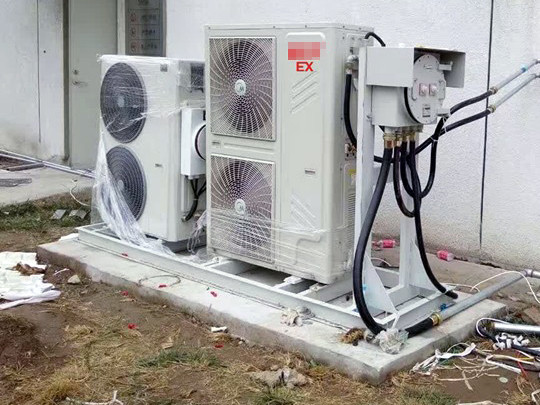Pamene nthawi ikupita patsogolo, zoziziritsa kukhosi zasintha kuchoka pazachilendo kupita ku zitsanzo zosaphulika, ndipo kuchuluka kwa mayunitsi apamwambawa kwasinthanso. Koma ma inverter air conditioners amaonekera bwanji poyerekeza ndi anzawo akale omwe sangaphulike? M'munsimu, timafufuza njira zingapo zodzitchinjiriza za ma inverter-proof air conditioners, zomwe zimapangitsa kuti ntchito ikhale yotetezeka komanso yogwira ntchito nthawi zonse.

1. Kuteteza Kutentha Kwambiri kwa Osinthira Kutentha Kwamkati:
Pamene ntchito mu Kutentha mode, Kuthamanga kwapang'onopang'ono kwa fan kapena zosefera zotsekeka zimatha kulepheretsa kutentha kwa koyilo yamkati, kuchititsa pamwamba pa exchanger kutentha kutentha kuwuka. Izi sizimangochepetsa kutentha kwachangu komanso zimatha kuyambitsa kutentha kwambiri kwa zida. Chifukwa chake, Ma air conditioners oteteza kuphulika kwa inverter amaphatikizira chitetezo chokwanira cha kutentha kwanyumba zosinthira kutentha m'nyumba.. Dongosololi limaletsa kuchuluka kwa mafupipafupi a kompresa pamene kutentha kwa chipinda kumapitilira 53 ° C; imachepetsa ma frequency a kompresa ndipo imagwiritsa ntchito injini yakunja ya fan pa liwiro lotsika ikapitilira 56 ° C.; ndipo imayimitsa kompresa ndikuyambitsa kutenthedwa kapena kutetezedwa mochulukira pamene kutentha kumapitilira 65 ° C.. Kutentha kofunikira kumeneku kumayang'aniridwa ndikudziwitsidwa kudzera pamagulu owonetsera, magetsi owonetsera, ndi buzzers.
1. Compressor Overcurrent Chitetezo:
Kuteteza ku mafunde ochulukirapo omwe angawononge mafunde amagetsi a kompresa, ma inverter-proof air conditioners ali ndi chitetezo champhamvu kwambiri. Panthawi yozizira, ngati compressor pano igunda 9.6A, microprocessor ya dongosolo imayambitsa chizindikiro chowongolera kuti chiteteze kuwonjezeka kwafupipafupi; ndi 11.5a, zimasonyeza kuchepetsa pafupipafupi; ndi 13.6a, imayatsa chizindikiro choteteza kuletsa ntchito ya kompresa. Ma protocol omwewo amagwira ntchito panthawi yotentha, ndi zipata zenizeni zomwe zakhazikitsidwa pa 13.5A, 15.4A, ndi 18a, motsatira. Iliyonse mwa magawo ovuta awa imawonetsedwa bwino kwa wogwiritsa ntchito kudzera pamagulu owonetsera, magetsi owonetsera, ndi ma buzzers kuti adziwe zambiri komanso chitetezo.
 Shenhai Kuphulika-Umboni
Shenhai Kuphulika-Umboni
